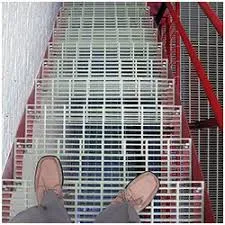
-
 Afrikaans
Afrikaans -
 Albanian
Albanian -
 Amharic
Amharic -
 Arabic
Arabic -
 Armenian
Armenian -
 Azerbaijani
Azerbaijani -
 Basque
Basque -
 Belarusian
Belarusian -
 Bengali
Bengali -
 Bosnian
Bosnian -
 Bulgarian
Bulgarian -
 Catalan
Catalan -
 Cebuano
Cebuano -
 China
China -
 China (Taiwan)
China (Taiwan) -
 Corsican
Corsican -
 Croatian
Croatian -
 Czech
Czech -
 Danish
Danish -
 Dutch
Dutch -
 English
English -
 Esperanto
Esperanto -
 Estonian
Estonian -
 Finnish
Finnish -
 French
French -
 Frisian
Frisian -
 Galician
Galician -
 Georgian
Georgian -
 German
German -
 Greek
Greek -
 Gujarati
Gujarati -
 Haitian Creole
Haitian Creole -
 hausa
hausa -
 hawaiian
hawaiian -
 Hebrew
Hebrew -
 Hindi
Hindi -
 Miao
Miao -
 Hungarian
Hungarian -
 Icelandic
Icelandic -
 igbo
igbo -
 Indonesian
Indonesian -
 irish
irish -
 Italian
Italian -
 Japanese
Japanese -
 Javanese
Javanese -
 Kannada
Kannada -
 kazakh
kazakh -
 Khmer
Khmer -
 Rwandese
Rwandese -
 Korean
Korean -
 Kurdish
Kurdish -
 Kyrgyz
Kyrgyz -
 Lao
Lao -
 Latin
Latin -
 Latvian
Latvian -
 Lithuanian
Lithuanian -
 Luxembourgish
Luxembourgish -
 Macedonian
Macedonian -
 Malgashi
Malgashi -
 Malay
Malay -
 Malayalam
Malayalam -
 Maltese
Maltese -
 Maori
Maori -
 Marathi
Marathi -
 Mongolian
Mongolian -
 Myanmar
Myanmar -
 Nepali
Nepali -
 Norwegian
Norwegian -
 Norwegian
Norwegian -
 Occitan
Occitan -
 Pashto
Pashto -
 Persian
Persian -
 Polish
Polish -
 Portuguese
Portuguese -
 Punjabi
Punjabi -
 Romanian
Romanian -
 Russian
Russian -
 Samoan
Samoan -
 Scottish Gaelic
Scottish Gaelic -
 Serbian
Serbian -
 Sesotho
Sesotho -
 Shona
Shona -
 Sindhi
Sindhi -
 Sinhala
Sinhala -
 Slovak
Slovak -
 Slovenian
Slovenian -
 Somali
Somali -
 Spanish
Spanish -
 Sundanese
Sundanese -
 Swahili
Swahili -
 Swedish
Swedish -
 Tagalog
Tagalog -
 Tajik
Tajik -
 Tamil
Tamil -
 Tatar
Tatar -
 Telugu
Telugu -
 Thai
Thai -
 Turkish
Turkish -
 Turkmen
Turkmen -
 Ukrainian
Ukrainian -
 Urdu
Urdu -
 Uighur
Uighur -
 Uzbek
Uzbek -
 Vietnamese
Vietnamese -
 Welsh
Welsh -
 Bantu
Bantu -
 Yiddish
Yiddish -
 Yoruba
Yoruba -
 Zulu
Zulu
Durable Fiberglass Grating Solutions for Industrial and Commercial Applications
Fiberglass Grating A Versatile Solution for Modern Applications
Fiberglass grating has emerged as a highly versatile and durable solution in various industrial and commercial applications. Crafted from fiberglass reinforced plastic (FRP), this material is recognized for its excellent strength-to-weight ratio, corrosion resistance, and low maintenance requirements. As industries become more demanding in terms of safety and efficiency, fiberglass grating offers a reliable alternative to traditional materials such as steel and wood.
One of the most significant advantages of fiberglass grating is its resistance to corrosion. In environments exposed to harsh chemicals, moisture, or saltwater, traditional materials can suffer from rust, rot, or degradation. Fiberglass, on the other hand, remains unaffected by these factors, making it ideal for industries such as chemical processing, wastewater treatment, and marine applications. This intrinsic durability not only extends the lifespan of the infrastructure but also reduces the need for frequent replacements, leading to cost savings over time.
The lightweight nature of fiberglass grating contributes to its practicality in various settings. Unlike steel grating, which can be heavy and cumbersome, fiberglass grating is easier to handle and install. This reduces labor costs and minimizes the risk of injury during the installation process. Furthermore, the ease of transportation due to its reduced weight makes it an appealing option for construction and maintenance projects.
Fiberglass grating also offers significant safety benefits. The slip-resistant surface of the grating ensures that workers can move safely in areas prone to spills or moisture accumulation. Additionally, its non-conductive properties make it an excellent choice for electrical applications where safety from electrical hazards is paramount. Various designs, including mesh and solid top configurations, allow for greater customization to meet specific safety requirements in different settings.
fiberglass grating

Another compelling reason to choose fiberglass grating is its aesthetic versatility. Available in a variety of colors and surface textures, fiberglass grating can blend seamlessly into various environments. This capability allows architects and designers to incorporate functional solutions without compromising on visual appeal. Whether used in a commercial building, industrial facility, or recreational area, fiberglass grating can enhance the overall look of a space while serving its intended purpose.
Maintenance is another area where fiberglass grating shines. Unlike wood, which requires regular sealing and treatment against weathering, or metal, which may need sanding and painting to prevent rust, fiberglass grating can be easily cleaned with soap and water. Its resistance to staining and mold growth further simplifies upkeep, allowing facilities to focus on their core operations rather than maintenance tasks.
Moreover, manufacturers of fiberglass grating are increasingly emphasizing sustainability in their production processes. Many companies are exploring methods to recycle fiberglass materials and reduce waste, aligning with global efforts towards environmental conservation. As organizations seek to enhance their sustainability profiles, the use of environmentally friendly materials like fiberglass grating can bolster their green initiatives.
In conclusion, fiberglass grating proves to be a practical, durable, and aesthetically pleasing solution for a variety of applications. Its corrosion resistance, lightweight nature, safety features, low maintenance requirements, and sustainable manufacturing practices make it a superior choice for industries aiming to enhance performance and safety while keeping costs manageable. As industries continue to evolve, fiberglass grating stands out as a reliable option that meets the demands of modern infrastructure and operational excellence. From industrial floors to walkways and platform construction, the benefits of fiberglass grating are undeniable, paving the way for broader adoption in the years to come.









